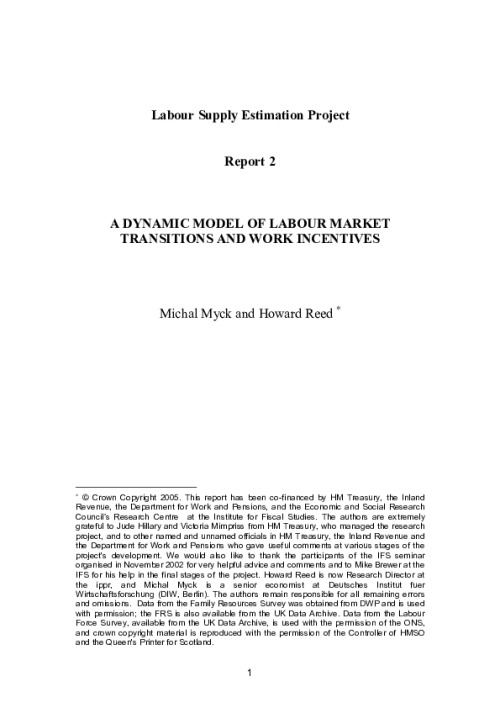- To design a model of transitions and flows between non-employment (non-participation, unemployment) and employment which shows how they are affected by various measurable characteristics of working age individuals and the labour market environment. Crucially, the model aims to show how entry into work and exit from work are related to the financial incentives that individuals face in making these transitions. These are affected by several factors ֠wage levels in the labour market, the number of hours of work, the affordability and availability of childcare, and the tax and benefit rates set by government.
- To estimate the model using the most suitable recent UK data sources.
- To use the model to simulate the effect of a variety of labour market reforms on employment inflows and outflows, and hence on overall labour market participation.
- To investigate the best way for this model to be made available to HMT, IR and DWP to use for their own simulation work.
The report from the previous phase of this project (Report 1) offered important preparation for the construction of the model by undertaking a detailed review of the literature on theory and estimation of models of labour supply. The review was arranged in two parts. Part 1 concentrated on ѳtatic' models of labour supply, reviewing the theory of single-period and intertemporal optimisation subject to budget constraints, focusing in particular on family labour supply, estimation in the presence of budget constraint non-linearities, allowing fixed and variable costs and controlling for non take-up. Part 2 offered a review of labour supply literature and related areas that focus on transitions between various labour market states, including search theory, hazard modelling, and models of job creation and destruction. It also looked at the returns to experience and tenure in the labour market, the wage penalty to displacement from work, and related areas. We will draw on the work surveyed in Report 1 throughout this phase of the report.










